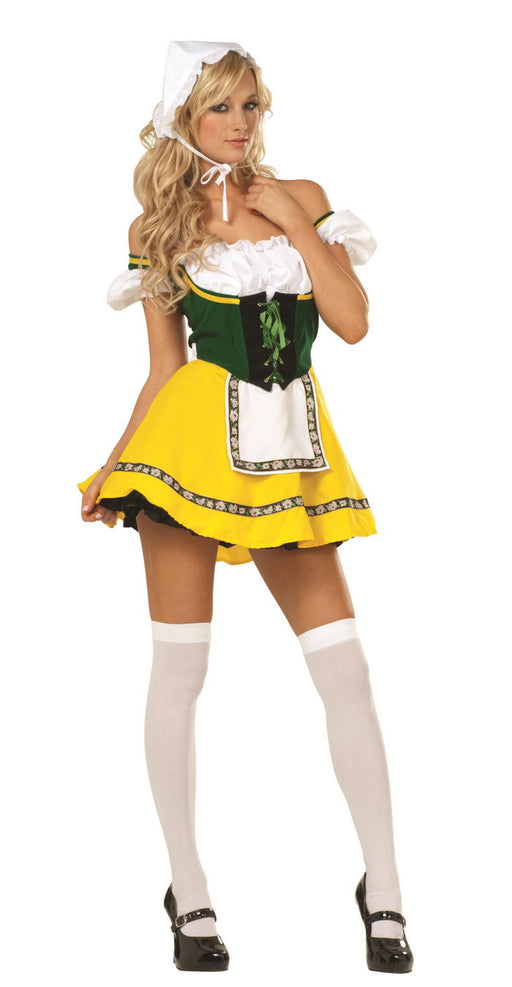
The Evolution of Chucky: A Journey Through Horror and Hallucination
The Child's Play franchise, with its iconic character Chucky, has been a cornerstone of horror cinema since its inception. As the series evolved, so did the character of Chucky, exploring new aspects of his personality and backstory. This blog delves into the evolution of Chucky, celebrating the milestones and memorable moments that have made him a cultural icon. Along the way, we'll also explore the surreal and hallucinatory aspects of the franchise that have added depth and intrigue to the horror.
Child's Play 2 (1990): Deepening the Darkness
After the groundbreaking success of the original Child's Play, the sequel Child's Play 2 was released in 1990, delving deeper into the chilling origins of Chucky. The film explored the voodoo ritual that allowed serial killer Charles Lee Ray to transfer his soul into the Good Guy doll, intensifying the horror.
The story picks up with young Andy Barclay, now in foster care after the traumatic events of the first film. Chucky, resurrected through a series of horrifying events, is back and more determined than ever to possess Andy's body. The film's climax in a toy factory, filled with an army of Good Guy dolls, created an unforgettable and nerve-wracking finale. For a teenager in the 1980s, this film was a harrowing exploration of childhood fears turned real, where the lines between reality and nightmare blurred.
Child's Play 3 (1991): A New Setting, A New Terror
Released in 1991, Child's Play 3 brought a fresh backdrop for Chucky's reign of terror by setting the story in a military academy. Andy Barclay, now a teenager, finds himself enrolled in the academy, trying to move on from his haunted past. But Chucky, ever the relentless pursuer, finds his way back to Andy.
The military setting added a new dynamic to Chucky's murderous antics. The film introduced new characters, including Tyler, a young cadet who becomes Chucky's new target for possession. The climax of the film, set in a haunted house ride at a carnival, was particularly memorable, blending the military discipline with the chaotic fear of Chucky's attacks. This setting also introduced hallucinatory sequences where characters grappled with their fears and suspicions, adding a psychological edge to the horror.
Bride of Chucky (1998): Love and Laughter in Horror
The franchise took a bold and comedic turn with Bride of Chucky in 1998. This film embraced a self-referential and campy tone, appealing to a broader audience while introducing Tiffany, Chucky's equally malevolent partner, played by Jennifer Tilly. Tiffany, a former lover of Charles Lee Ray, resurrects Chucky, leading to a bloody and hilarious road trip.
The film was a mix of horror and dark comedy, poking fun at itself and the genre. Tiffany's transformation into a doll and her tumultuous relationship with Chucky added a new layer of intrigue and entertainment. The sight of two killer dolls navigating a chaotic road trip, leaving a trail of bodies in their wake, was both absurd and terrifying. The film's self-awareness, combined with Tilly's charismatic performance, made it a standout in the series. The hallucinatory elements came into play with dream-like sequences where reality and fantasy intertwined, adding a surreal quality to the narrative.
Seed of Chucky (2004): Family Ties and Dark Humor
In 2004, Seed of Chucky continued the comedic and self-aware approach introduced in Bride of Chucky. This film added a new layer of complexity to the story with the introduction of Glen/Glenda, the offspring of Chucky and Tiffany. Don Mancini returned to direct Seed of Chucky, ensuring that the film stayed true to his original vision while pushing the boundaries of horror and comedy.
Seed of Chucky explored themes of identity and family in a twisted, horror-comedy format. Glen/Glenda's struggle with their identity, caught between their murderous instincts and desire for a normal life, provided a unique narrative twist. The film was filled with meta-humor, including appearances by Jennifer Tilly playing a fictionalized version of herself, adding to the film's self-referential charm. Watching this installment, I was struck by how the franchise continued to evolve, maintaining its core horror elements while embracing new storytelling techniques.
Curse of Chucky (2013): Back to the Roots
In 2013, the franchise took a darker and more serious turn with Curse of Chucky. This film returned to the horror roots of the original series, focusing on a more suspenseful and atmospheric style. Nica Pierce, a paraplegic woman, becomes the new target of Chucky's malevolence, leading to a series of grisly murders.
The film revealed deeper connections to the original Child's Play series, uncovering more about Charles Lee Ray's backstory and his connection to Nica's family. The suspenseful narrative and confined setting of a single house added to the claustrophobic terror. Hallucinatory sequences played a significant role, as characters experienced visions and nightmares that blurred the lines between reality and Chucky's malevolent influence.
Cult of Chucky (2017): Psychological Horror and Hallucination
Cult of Chucky (2017) pushed the boundaries of psychological horror within the franchise. The story followed Nica Pierce, now confined to an asylum for the criminally insane, as she struggles with the belief that Chucky was responsible for the murders. The film introduced multiple Chucky dolls, each possessed by Charles Lee Ray, leading to a chaotic and terrifying scenario.
The asylum setting allowed for intense psychological horror, with characters experiencing vivid hallucinations and questioning their sanity. The film played with themes of identity and perception, leaving both characters and audiences unsure of what was real. The hallucinatory sequences, combined with Chucky's relentless attacks, created a nightmarish atmosphere that was both unsettling and captivating.
Chucky's Cultural Impact
Chucky quickly became a cultural icon, his influence extending beyond the silver screen. The character inspired comic books, video games, and even a television series. Chucky's catchphrases and distinctive appearance cemented his place in the pantheon of horror villains. For me, and many others, Chucky was more than just a movie character; he was a symbol of the thrill and excitement of discovering horror films during a golden era of cinema.
Our Seed of Chucky Doll
For fans of the franchise and collectors of horror memorabilia, our Seed of Chucky Doll is a must-have addition to any collection. This meticulously crafted replica captures the essence of Chucky as seen in Seed of Chucky. With its lifelike details and menacing expression, the doll serves as both a tribute to the character's legacy and a chilling Halloween decoration.
A Hallucinatory Trip Down Memory Lane
Watching the Chucky movies for the first time was an experience I'll never forget. Each film brought its own unique blend of horror and dark humor, keeping me on the edge of my seat. The thrill of seeing Chucky come to life, his sinister smile and maniacal laugh, was a defining moment in my journey as a horror fan. The hallucinatory elements in the films added an extra layer of depth, making the experience even more immersive and terrifying.
Celebrating Chucky's Legacy
Each film in the Child's Play franchise brought something new to the table, evolving the character of Chucky and keeping audiences hooked. From the dark origins in Child's Play 2 to the military academy in Child's Play 3, the comedic turn in Bride of Chucky, and the family dynamics in Seed of Chucky, the franchise has consistently delivered thrills, chills, and laughs.
For those of us who grew up in the 1980s, discovering Chucky in the movie store was an unforgettable experience. The excitement of renting each new installment, gathering with friends to watch the latest horrific adventure, and discussing the scariest and funniest moments, are memories that still bring a smile to my face. The evolution of Chucky is not just a tale of a horror icon but a nostalgic journey through the highs and lows of horror cinema.
Conclusion
The Child's Play franchise has left an indelible mark on the horror genre, with Chucky becoming a cultural icon. The evolution of Chucky from a simple doll to a complex character with a rich backstory and dark humor is a testament to the creativity and vision of its creators. As we celebrate Chucky's legacy, we remember the thrill of those movie store discoveries and the joy of sharing these terrifying tales with fellow fans.
The Seed of Chucky doll available at our store is more than just a Halloween decoration; it's a piece of this rich history, a reminder of the horror and hilarity that Chucky brought into our lives. Whether you're a long-time fan or new to the franchise, this doll is the perfect way to celebrate the evolution of one of horror's most iconic characters. So, let's raise a toast to Chucky, the doll that terrified and thrilled us all, and continues to haunt our nightmares to this day.
The journey through the Child's Play franchise is one filled with terror, laughter, and hallucinatory experiences that blur the lines between reality and nightmare. Chucky's evolution is a testament to the enduring appeal of horror and the creative minds behind this iconic character. Here's to many more nights of spine-tingling chills and unforgettable thrills with Chucky.
Featured collection
Sexy Post Office Girl | Costume-Shop.com
Attention all aspiring letter carriers and mail enthusiasts! Prepare to deliver a package of seductive style and naughty charm with our Sexy Post O...
View full detailsNorthern Warrior Costume | Costume-Shop.com
Upgrade your costume game to legendary status with the Northern Warrior Costume! Designed for rugged adventurers and fearless warriors of the North...
View full detailsBeer Garden Babe Oktoberfest | Costume-shop.com
🇩🇪 Step into the Festivities with Bavarian Charm! Embrace the spirit of Oktoberfest in the Beer Garden Babe Costume from www.Costume-shop.com. Perf...
View full detailsSexy Police Officer Hottie | Costume-Shop.com
🚓 Enforce Fun with a Dash of Flair! Step into the role of authority with the Sexy Police Officer Hottie Costume from www.Costume-shop.com. Designed...
View full detailsSexy Girl Scout | Costume-Shop.com
Get ready to sell some irresistibly delicious cookies and turn heads with our Sexy Girl Scout Costume! This playful and alluring ensemble is perfec...
View full details








Leave a comment